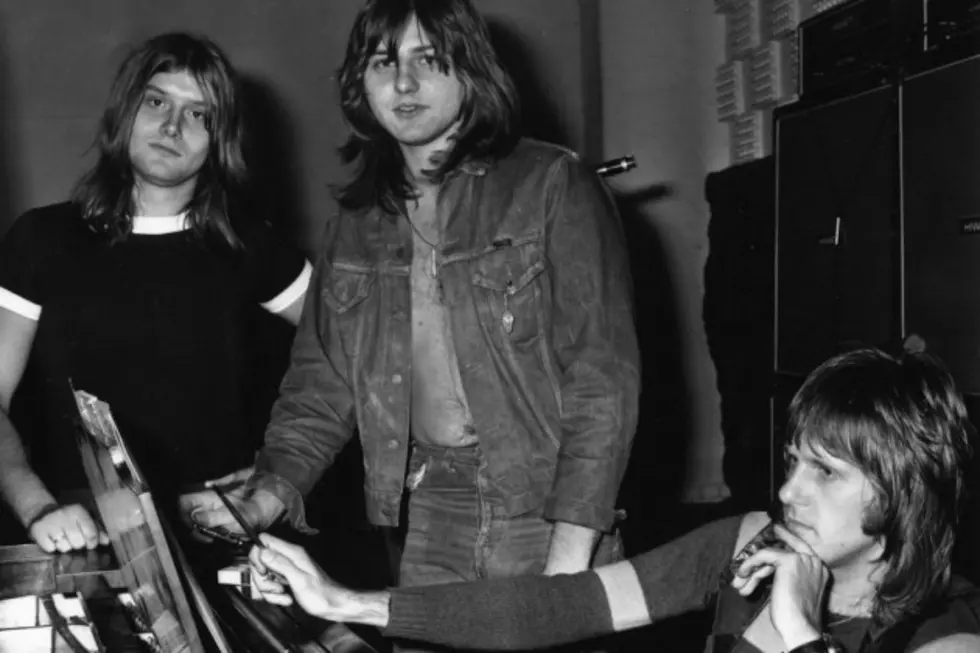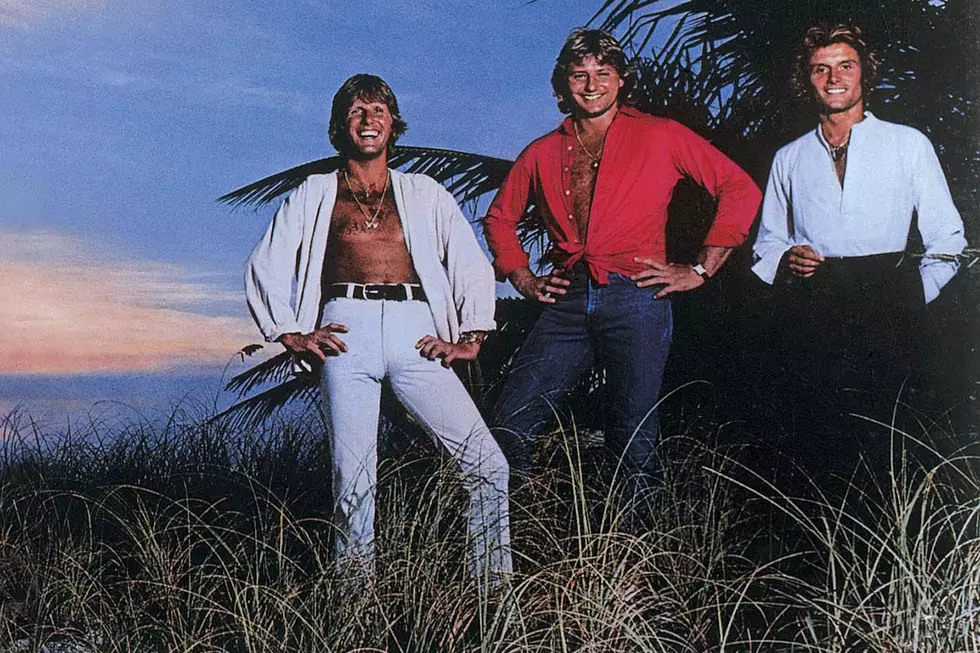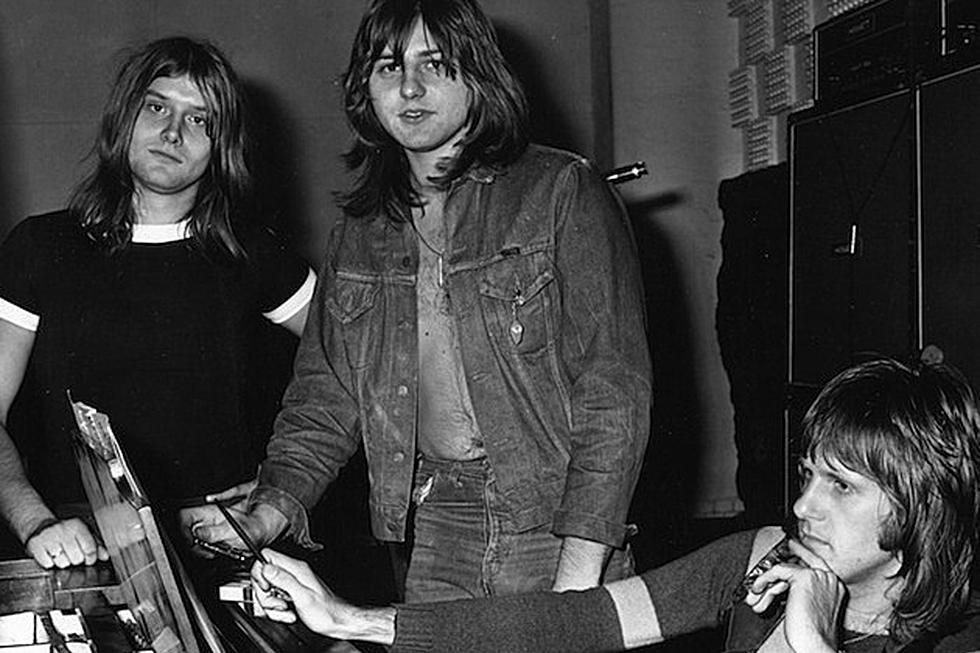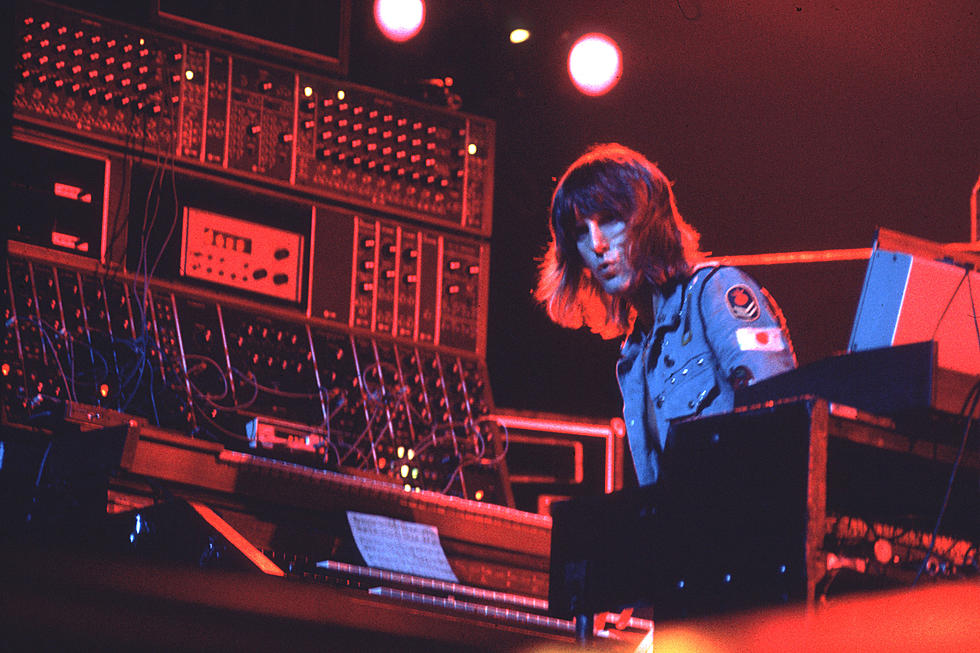
50 Years Ago: Emerson, Lake and Palmer Make Their Stage Debut
Emerson, Lake and Palmer catapulted toward international stardom with their earth-shattering 1970 performance at the Isle of Wight Festival. That show included fired cannons from the stage and an annihilation of their instruments in a classical-rock blitz with a half-million onlookers gasping for air. But the supergroup's proper debut – a modest warm-up gig at the 3,000-seat Guildhall in Plymouth, England – took place six days earlier, on Aug. 23.
ELP's meteoric rise seemed inevitable, as three young studs of the prog-rock scene – keyboardist Keith Emerson (the Nice), bassist-singer Greg Lake (King Crimson) and drummer Carl Palmer (Atomic Rooster) – united for a bombastic wallop custom-fit for conquering stadiums. The press had been foaming at the mouth, building rumors of a proposed jam session with guitar icon Jimi Hendrix – "HELP" – into the realm of myth. It's surprising, then, how little we know about the band's first concert.
Many band biographies and rock docs label the Isle of Wight performance as their debut, but ELP have denied that claim throughout the years, emphasizing the monumental difference between those two shows. "You have to understand something: before the evening of Isle of Wight, we played at a small center in Plymouth called the Guildhall, and then Emerson, Lake and Palmer were known as individuals, not as a group," Palmer told the San Antonio Current in 2011. "The minute we played at Isle of Wight, we became an international group. That’s what the Isle of Wight festival did for us, overnight."
The band reportedly made $500 for the warm-up – surely a drop in the bucket compared to what they'd earn on gaudy arena tours to come. But the most important historical footnote – the set list – is more elusive. The band played four pieces: the mighty, Janáček and Bach-quoting "Knife-Edge," covers of Dave Brubeck Quartet's "Blue Rondo à la Turk" ("Rondo") and Leonard Bernstein's "America" and a Palmer drum solo. But that post is hardly definitive – and, notably, it differs from the band's Isle of Wight set, which included the Bartók adaptation "The Barbarian," atmospheric original "Take a Pebble," and ambitious renditions of Mussorgsky's "Pictures at an Exhibition" and Tchaikovsky's The Nutcracker ("Nutrocker").
"I think a lot of those big events like Woodstock, the Isle of Wight, California Jam — a lot of them I performed on — I think it wasn’t only the fact that the audience was coming along to see Led Zeppelin or Jimi Hendrix or ELP, or whomever it was," Lake told Ultimate Classic Rock in 2013. "They were coming along to be. ... It was like a gathering where they felt bonded together in this shared vision, where the expression was the music. So that was the underlying thought about it."
While we may not know what ELP played at their breakthrough gig, it's clear how they played: With blunt force and deafening volume. The band's Isle of Wight performance displayed the trio in full flight, defined by Palmer's intricate drum work, Lake's sturdy bass and Emerson's wizardry on the Hammond organ, piano and gargantuan Moog synthesizer. The show circulated for years in bootleg form and was officially released in 1997 as Live at the Isle of Wight Festival.
Building on the massive momentum of that gig, ELP released their self-titled debut LP that November in the U.K. (hitting No. 4 on the chart), with an American release following two months later. Collecting the propulsive highlights of their stage set with the Palmer percussion showcase "Tank" and the Lake-penned sing-along ballad "Lucky Man," the album became a turning point in the marketability of prog – proving this kind of demented, dazzling technicality had life outside of stoner basements.
For nearly a decade, ELP were kings – but at a price. Their blend of blues-based rock, classical, jazz and proto-metal noise would define the genre's ascension, but the backlash would help contribute to its demise.
Top 100 Classic Rock Artists
More From Ultimate Classic Rock









